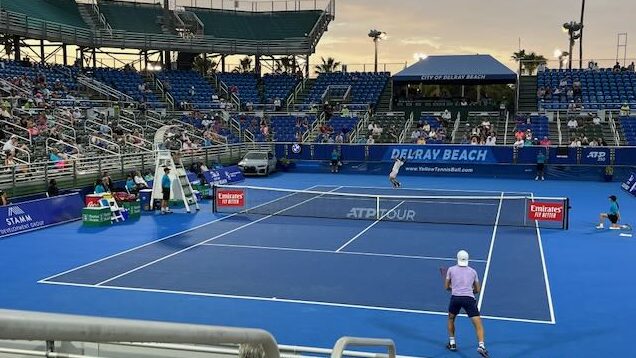
During our recent Florida vacation, my family and I spent an evening at the quarterfinals of the Delray Beach Open tennis tournament.
This was our second time at this nice, small, ATP (men only) event that attracts players Martha knows and likes to see up close, including Tommy Paul, Adrian Mannarino, and eventual champion Taylor Fritz.
That’s possible because the DBO stadium isn’t very large. We try to avoid big crowds, which is why she’s never wanted to go to the US Open, Australia Open, French Open, or Wimbledon. Those grand slam events are a pleasure to watch on TV, but in Delray, you’re close enough to actually see the path of the ball affected by top spin and slices. Or hear the players’ coaches shouting advice from the stands. And there’s always an old woman yelling encouragement with a voice like Selma Diamond’s.
I’m also fascinated by the technology behind the electronic line calls using cameras placed around the perimeter of the court, complete with a disembodied voice calling “fault” or “out.” It’s the same tech formerly used for player challenges, but those aren’t allowed once the software has ruled — and close calls are still shown on the stadium scoreboard, almost as if the computer is saying, “See? It did hit the line, so it was in!”
After each match, I’d watch the loser walk off the court and wonder whether they were thinking, “Well, I didn’t make enough in prize money to cover my travel expenses, let alone pay my coach, hitting partner, trainer, and my girlfriend’s bill at the spa at the hotel that was too expensive for me to begin with.” As in other similar endeavors, there’s a big difference between being a professional tennis player and being a successful tennis player.
